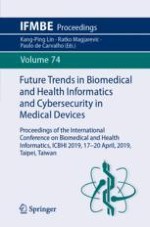2020 | OriginalPaper | Chapter
A Novel Multi-direction Adjustment Strategy for Reducing Ghost Artifact in Body Tomosynthesis
Authors : Yu-Ching Ni, Chia-Yu Lin, Chia-Hao Chang, Fan-Pin Tseng, Sheng-Pin Tseng, Keh-Shih Chuang
Published in: Future Trends in Biomedical and Health Informatics and Cybersecurity in Medical Devices
Publisher: Springer International Publishing
Activate our intelligent search to find suitable subject content or patents.
Select sections of text to find matching patents with Artificial Intelligence. powered by
Select sections of text to find additional relevant content using AI-assisted search. powered by
